The re-introduction of the Chevrolet Colorado and its sibling, the GMC Canyon in the 2015 model year really seemed to re-ignite the market for the mid-sized pickup truck in Canada. It makes perfect sense; a rugged and capable truck with proportions better suited to urban life. The Colorado has a new nemesis now with the recent introduction of the Jeep Gladiator (reviewed here), so to keep things exciting, Chevy has launched the ZR2 off-road model.
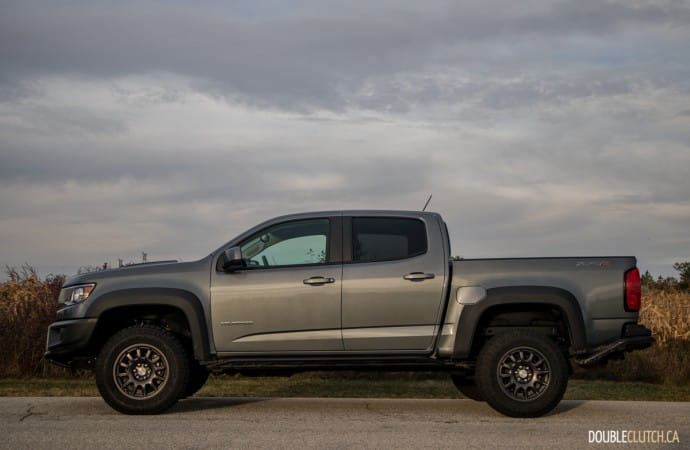
Those who recall the ZR2 moniker on early 2000s Blazers, Jimmys, S10s & Sonomas will remember off-road goodies like a lifted suspension, wider track, fender flares and skid-plates. Is reviving an off-road nameplate and taking equipment up a couple notches enough to keep the Colorado interesting as it squares up against the charismatic Gladiator. We spent a week with the rugged 2019 Chevrolet Colorado ZR2 Bison to find out.
I was not a huge fan of the Colorado’s looks when it was first introduced, but the sheet-metal has aged well and I have a new-found appreciation for its honest and simple lines with just enough modern flare to keep with the times. The real news here however is the ZR2’s off-road goodies that really set the truck apart. With a two-inch suspension lift, sharp desert pre-runner style front bumper and beefier body cladding, the standard ZR2 looks fantastic and there is certainly no mistaking it for an ordinary truck.
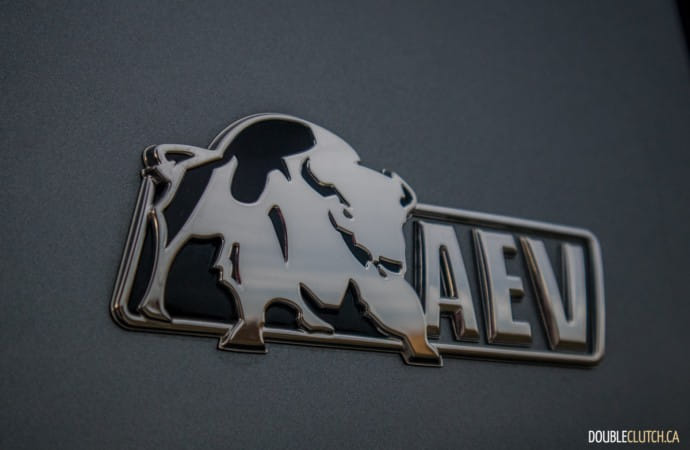
Our tester however, takes the ZR2 package even further with the addition of the AEV Bison package that really it look like a trail rat. AEV stands for American Expedition Vehicles, a company out of Montana that has become one of the world’s premier suppliers of OE-quality, performance-driven aftermarket parts and accessories for vehicles built for off-road and overland adventures. They’ve partnered with Chevrolet on this and kitted out the Colorado with some of their top-tier accessories.
The ZR2 pre-runner style bumper, which I love, is replaced by a huge AEV winch-ready front bumper and matching rear bumper, a unique grille, fog lamps, rock rails and oversized fender flares. Underneath, anything vulnerable to damage is equipped with AEV skid plates, and the AEV branding is carried inside the truck with embroidered logos on the headrests and custom floor liners. Of course, the AEV Bison gets 17-inch AEV off-road wheels wrapped in Goodyear Duratrac all-terrain rubber. The Colorado AEV Bison absolutely looks and feels like a purpose-built off-road rig.
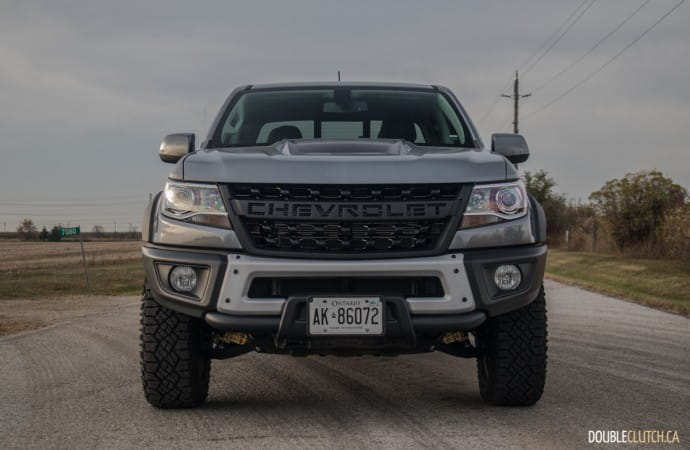
Rugged on the outside and business on the inside, the Colorado’s interior isn’t done up in acres of cow hides or other fancy accents, but rather remains all about practicality. All the controls are well placed and easy to use, even with gloves. The recently updated Chevy MyLink infotainment with optional navigation holds its position as one of the best in the market. The leather wrapped steering wheel is now heated, a feature that was previously missing from the Colorado, as are the leather seats. It took me a while to find a good driving position and the seats, which utilize a power bottom and manual backrest, are fairly hard.
One area however where the Colorado’s interior needs some improvements is storage. In a truck, interior storage is critical for all the items you want to keep with you that are not suitable for the bed. The door pockets are narrow and awkwardly shaped, and while the center console is large, it would benefit from a column shifter to make for a larger and deeper console bin like in the full-size GM trucks. The rear seats in the Crew Cab are a little shy on legroom if you’re carrying adults, and while the rear seat bottoms flip up to reveal storage bins, the bins are awkwardly sized – buyers would rather have a flat floor for loading bulky but delicate items.
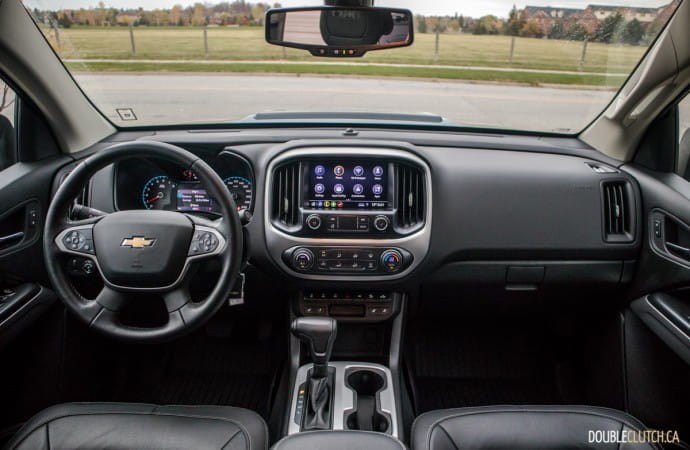
What really matters with a truck like this though is what it can do both on and off the road. The ZR2 is one of the most capable mid-sized trucks on the market, and I’d be willing to bet that it would stand up to many purpose-built aftermarket builds. While you can get a ZR2 Bison with the awesome 2.8L Duramax diesel (reviewed here), our tester came with the standard 3.6-liter V6, now mated to the new eight-speed automatic. The 3.6L is a good V6; reliable and well sorted with a healthy 305 horsepower. The only issue in a truck like this is that it is a bit light on torque, producing 275 lb-ft. at a rather high 4,000RPM. This is acceptable in a standard crossover, but in a truck it lacks the punch you’d want off the line.
Fortunately this has mostly been cured by the addition of the eight-speed transmission that’s quicker to respond to throttle inputs and more eager to downshift than the lazier six-speed it replaces. Our tester also came with the $2,650 dealer-installed Power Package adding a performance air intake and cat-back exhaust, which plays a role in waking the truck up a bit more. This power can be directed to the rear wheels only, or all four with selectable 4-HI and 4-LO modes, coupled with full locking front and rear differentials at the touch of a button.
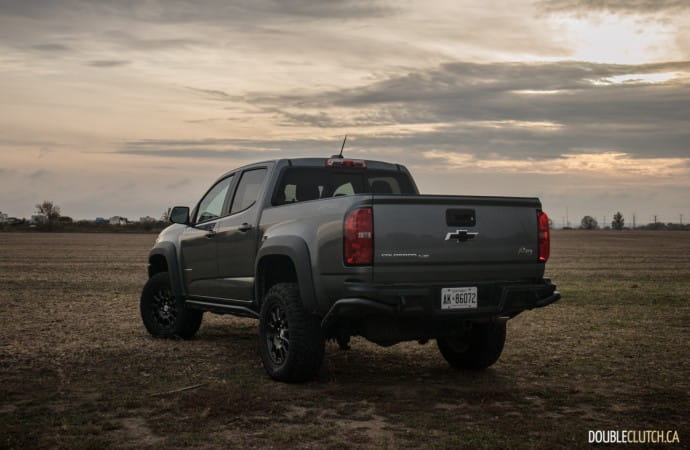
Breathing through the performance exhaust, the 3.6L has sort of a smooth growl under load that fades away once you’re cruising at speed. The Colorado ZR2 handles surprisingly well, so well in fact that it’s easy to forget you’re in a lifted truck running on aggressive all-terrain tires. Ride quality is also a surprise thanks to the ZR2’s “magic dampers”, a set of serious off-road remote reservoir shocks provided by Multimatic and their DSSV technology. Multimatic, a local Toronto-area company, has utilized similar technology on supercars like the Aston Martin One-77, Chevrolet Camaro Z/28, Mercedes-AMG GT (reviewed here) and the Ford GT. In this case, the dampers provide a comfortable on-road ride, while allowing for the articulation and punishment of heavy off-roading.
On a rush hour commute into the city, the Colorado proved easier to maneuver than a full-sized truck, a huge bonus for those who want the functionality of a truck, but commute as well. We also took the ZR2 on a six-hour road trip. It may not be the best highway vehicle, but it got the job done and kept us in relative comfort. This is where the interior really proved itself as a comfortable place to spend hours on end. The soft drone of the aggressive tires and performance exhaust, coupled with an inexplicable rattle in the driver’s side B-pillar did serve as a bit of a distraction.

The Colorado ZR2 isn’t exactly efficient thanks to the added ground clearance and off-road equipment; it’s rated at 15.0L/100km in the city and 13.0L/100km on the highway. I commuted in rush hour traffic, and then took a six hour all-highway road trip to end the week with a 13.0L/100km average, beating the rating by just a bit. The highway economy hurts, but a saving grace is that the ZR2 Bison does take regular 87 octane.
Fuel economy aside though, the Colorado ZR2’s biggest issue is pricing. You can get into a ZR2 for as little as $47,600, which is a fair price, but when you start to add options it gets out of hand quickly. In the case of our tester, the AEV Bison package costs $7,475. It does deliver a lot of goods, but you definitely pay for each and every one of them. In addition to that it also got the $2,650 Power Package (exhaust and intake) and $495 Satin Steel Metallic paint. This pushed our as tested price to $58,400, and buyers could easily find themselves over $60,000 if liberal with option boxes.
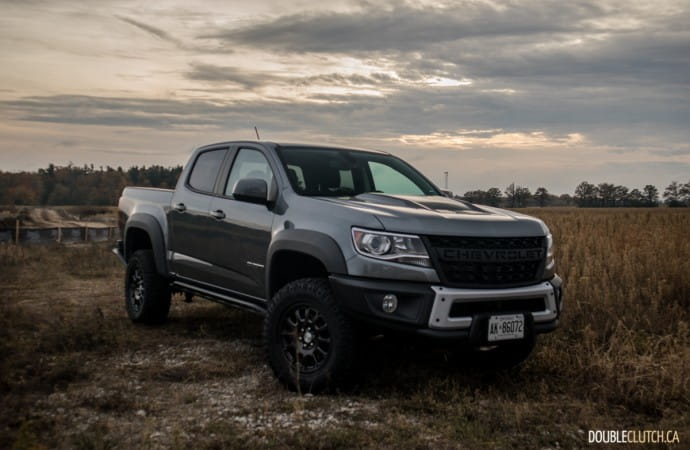
At the base price of $47,600, the ZR2 is a decent value for a unique truck that can work nearly as hard as a full-sizer, commute nearly as comfortably as a sedan, and off-road nearly as well as a purpose-built rig. If you have the cash to toss around, the AEV Bison delivers a lot of off-road credentials, but unless you really intend to use the skid plates and beefy bumpers, your money is probably better spent accessorizing your ZR2 exactly how you want it. Regardless, this is one of the most interesting trucks on the road, and would only be improved with the addition of the twin-turbocharged V6 in their lineup!
See Also:
2020 Jeep Gladiator Rubicon
First Drive: 2019 GMC Sierra Elevation
2019 GMC Canyon All-Terrain

